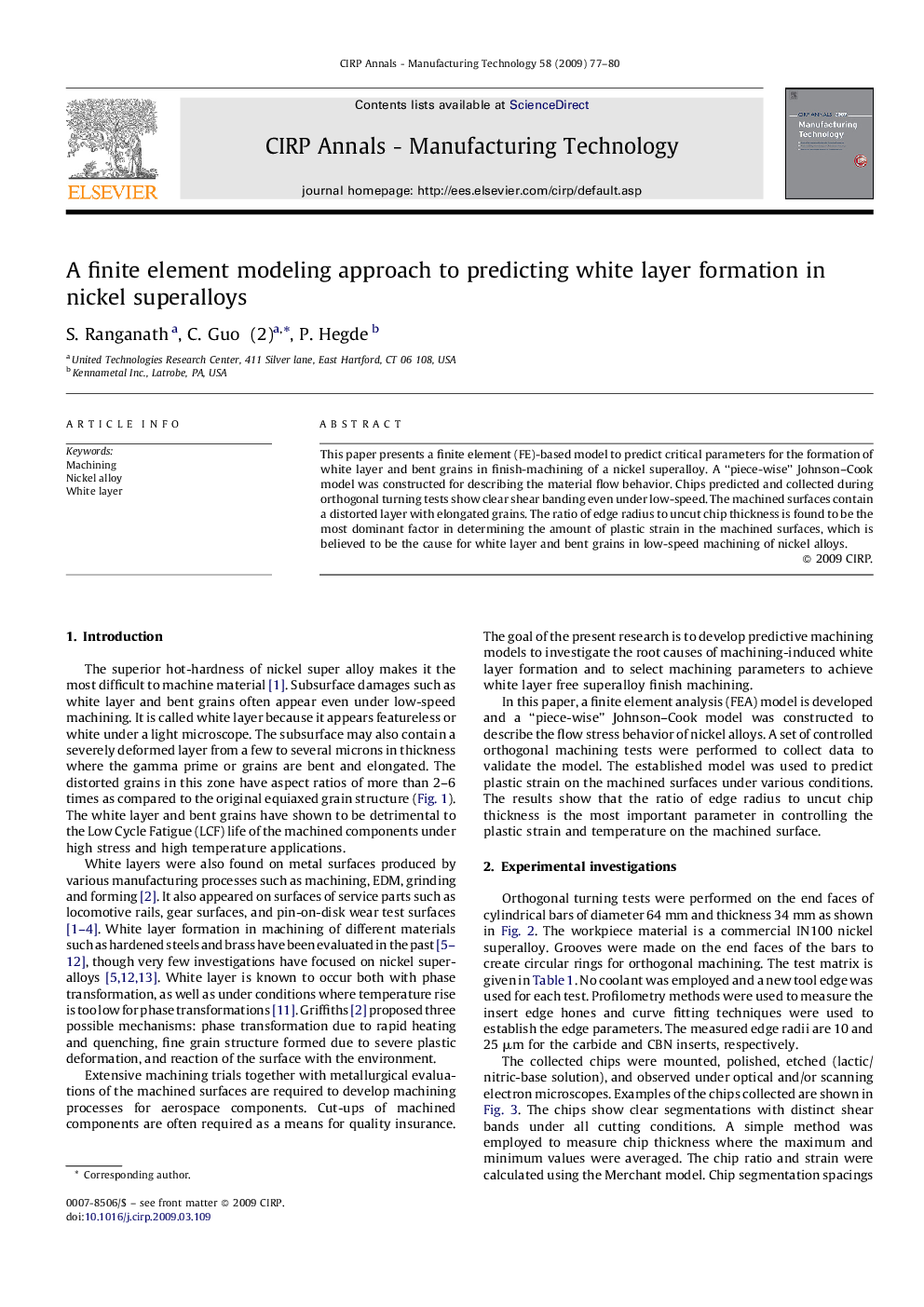| Article ID | Journal | Published Year | Pages | File Type |
|---|---|---|---|---|
| 10673219 | CIRP Annals - Manufacturing Technology | 2009 | 4 Pages |
Abstract
This paper presents a finite element (FE)-based model to predict critical parameters for the formation of white layer and bent grains in finish-machining of a nickel superalloy. A “piece-wise” Johnson-Cook model was constructed for describing the material flow behavior. Chips predicted and collected during orthogonal turning tests show clear shear banding even under low-speed. The machined surfaces contain a distorted layer with elongated grains. The ratio of edge radius to uncut chip thickness is found to be the most dominant factor in determining the amount of plastic strain in the machined surfaces, which is believed to be the cause for white layer and bent grains in low-speed machining of nickel alloys.
Keywords
Related Topics
Physical Sciences and Engineering
Engineering
Industrial and Manufacturing Engineering
Authors
S. Ranganath, C. Guo, P. Hegde,
